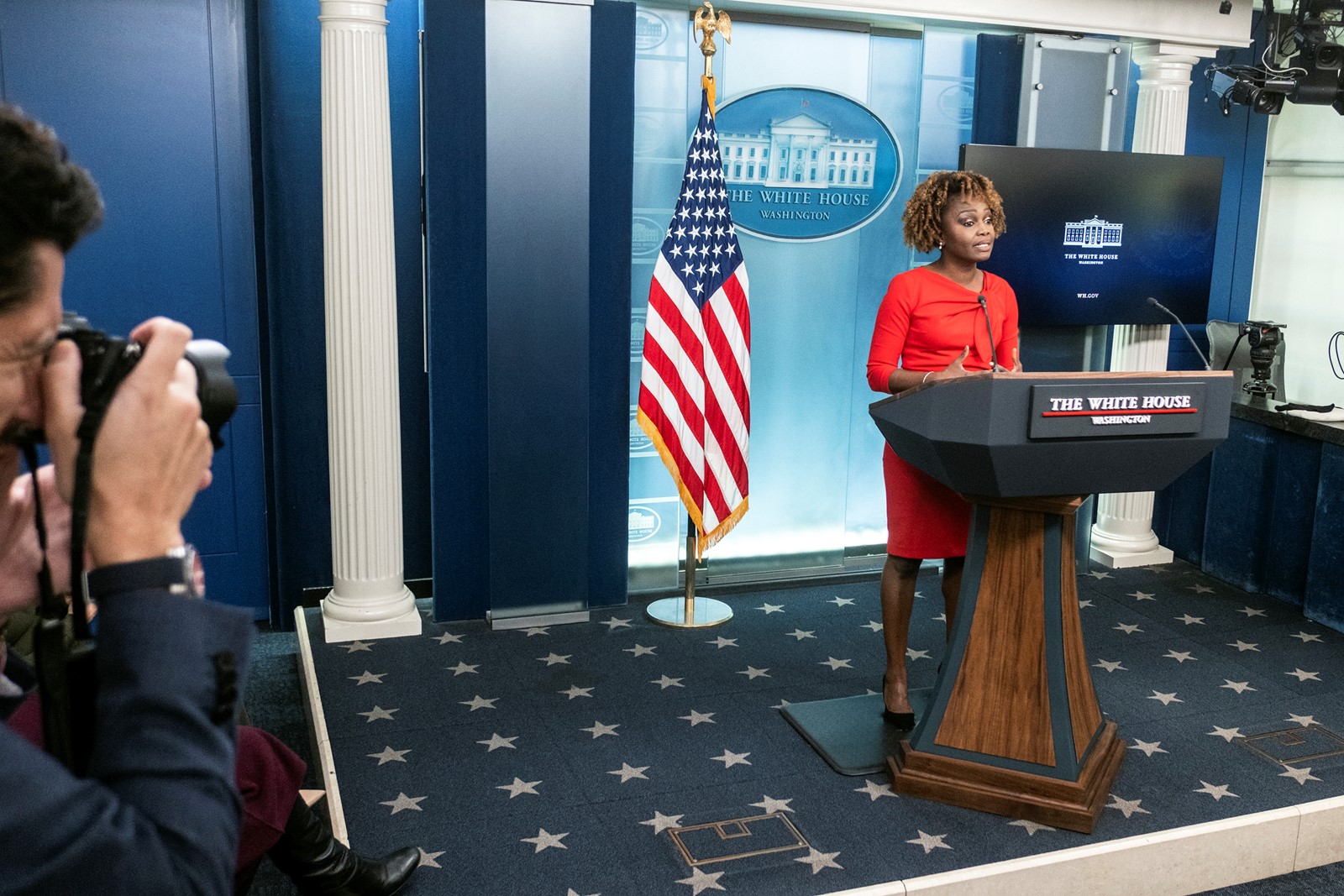
WASHINGTON — On her first day covering the White House, Alice Dunnigan had every reason to stand out.
She was the first Black woman to be credentialed to join the White House press corps, and she had even arrived an hour early to cover her first news conference with President Harry Truman.
But as she sat in the lobby of the West Wing, she may as well have been invisible.
“I sat there alone and apparently unnoticed, taking in all the activity while glancing now and then at my newspaper,” she wrote in her autobiography, “Alone Atop the Hill.” “If anyone wondered who I was or why I was there, they made no effort to find out.”
More than 75 years later, Dunnigan’s memory is being honored in the same setting where her colleagues once ignored her.
In November, White House press secretary Karine Jean-Pierre named a new lectern in the White House briefing room for Dunnigan of The Associated Negro Press and Ethel L. Payne, who joined Dunnigan on the beat a few years later for The Chicago Defender.
“The White House lectern is a powerful symbol of freedom and democracy beamed around the world on a regular basis,” said Jean-Pierre, who is the first Black woman to serve as White House press secretary. “I can’t think of two better people to be associated with that symbol than Alice and Ethel.”
Over the years, the briefing room lectern has become as much a cultural artifact as a political one, anchoring a room accessible to a privileged few.
April Ryan, Washington bureau chief and senior White House correspondent for The Grio, and the longest-serving Black woman in the White House press corps, said the decision to honor Dunnigan and Payne made her feel “seen.”
“There are still crescendo moments in Black America, and we are the only ones who are asking those questions, or writing those stories, and asking Black questions that no one else dares, or wants, or thinks are important enough to ask,” she said.
Ryan, who has been attacked by former President Donald Trump and conservative media for asking questions that pertain to Black Americans, said the choice of these two women is particularly poignant.
Both women were chastised by White House officials and later ignored by President Dwight Eisenhower, who was often flustered by their questions about civil rights.
Dunnigan recalled how she managed to scoop her colleagues during a cross-country train trip with Truman. When the train stopped in Missoula, Montana, in the middle of the night, many other reporters were asleep as Truman emerged in his bathrobe and spoke to a waiting crowd of students about civil rights.
She was still awake, and reporters who missed the moment pressured her to not publish the resulting story for fear that it would make them look bad. But she published anyway.
It took three months for Payne to ask her first question at one of Eisenhower’s news conferences, according to her biography, “Eye on the Struggle.”
The day came in February 1954, when she asked him about the Howard University choir being blocked from performing at a celebration he attended — a detail that had been left out in other coverage of the event.
A question about whether Eisenhower would take action on banning segregation in interstate travel after the 1954 Brown v. Board of Education Supreme Court decision was the one that got her shunned. Not only did Eisenhower stop calling on her, according to her biographer, but the White House press secretary attempted to revoke her press credentials.
Alicia Dunnigan, Dunnigan’s granddaughter, said her grandmother would be “overcome” by the news of the lectern, which was officially dedicated in November.
“She wanted to inspire future generations,” Dunnigan said of her grandmother, who died in 1983.


 PREVIOUS ARTICLE
PREVIOUS ARTICLE
